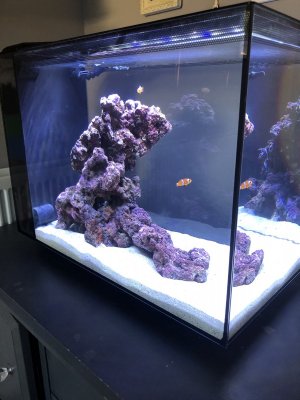- Joined
- May 23, 2020
- Messages
- 22
- Reaction score
- 18
Hi All,
I appreciate the following question may be a bit up for debate depending on a number of parameters; what would you say is the top limit ammonia level before you need to start to worry?
I’m doing weekly water changes so it never really gets that high, I think the highest I had was approximately 0.1 ppm. I test every other day but I’d like to get an idea of a level of ammonia at which I’d need to do an emergency water change prior to my scheduled weekly change.
My testing kit does have a scale but it says 0.5 ppm is dangerous, yet my fish have been absolutely fine, eat well and swim around looking as healthy as the day I bought them.
If it helps, I have a 62litre tank with two tiny clown fish.
Appreciate any feedback and advice anyone can give.
Thanks.
I appreciate the following question may be a bit up for debate depending on a number of parameters; what would you say is the top limit ammonia level before you need to start to worry?
I’m doing weekly water changes so it never really gets that high, I think the highest I had was approximately 0.1 ppm. I test every other day but I’d like to get an idea of a level of ammonia at which I’d need to do an emergency water change prior to my scheduled weekly change.
My testing kit does have a scale but it says 0.5 ppm is dangerous, yet my fish have been absolutely fine, eat well and swim around looking as healthy as the day I bought them.
If it helps, I have a 62litre tank with two tiny clown fish.
Appreciate any feedback and advice anyone can give.
Thanks.
















